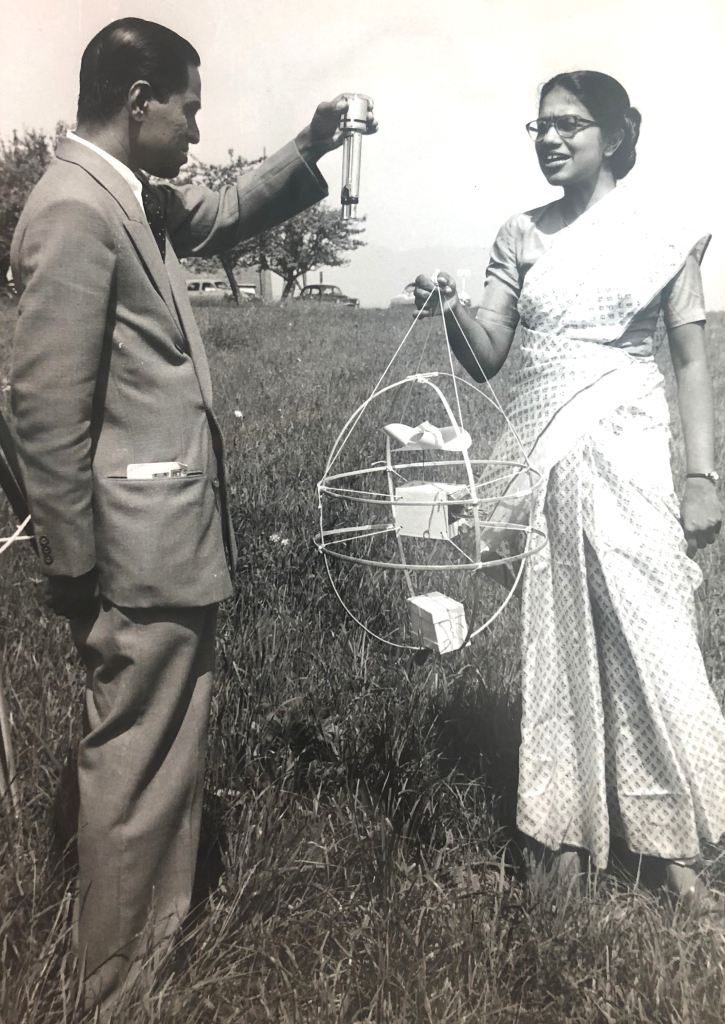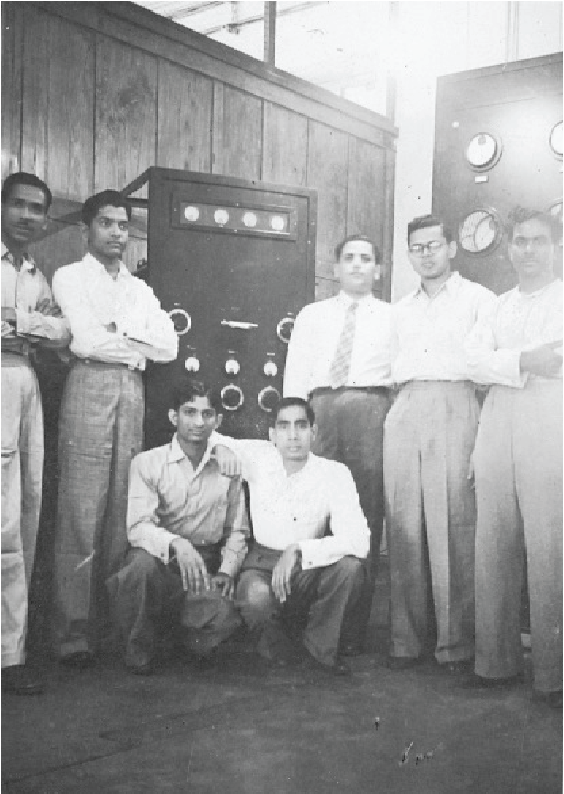IISc and IIT Madras have agreed to host the institutional chapters of Re:Collect, a first-of-its-kind public digital repository to document memories of Indian science

We are fast losing the memories of a generation that built the infrastructure to transform Indian science and engineering in the 20th century. To capture and preserve these experiences, my team and I have initiated a public archive of science in India called Re:Collect. This crowd-sourced online repository will collect and house recordings of conversations with free India’s first generation of scientists, engineers, and laboratory technicians about their work and their lives in a time and a world to which we have lost connection – in short, it will document memories of science in action. The project is urgent and the task enormous.
Re:Collect is the first attempt in India to draw on the inquisitiveness of the public, especially the young, to unearth, document, and to begin to appreciate India’s interesting history of science and technology. Towards this, we draw inspiration and learning especially from P Sainath’s People’s Archive of Rural India (PARI) and Guneeta Singh Bhalla’s 1947 Partition Archive – both highly successful volunteer driven public digital archives.
What Sainath says about the need for a people’s archive is true also for the rich history of science in India, “Without any systematic record, visual or oral, to educate us – let alone motivate us – to save this incredible diversity, we are losing worlds and voices … of which future generations will know little or nothing. Even as the present one steadily sheds its own links with those worlds.” Re:Collect India takes on the challenge to promote an intergenerational conversation, to build a public digital archive and to plug into a network of institutional archives willing to accept documents and objects discovered. The Archives and Publications Cell (APC) at IISc and the Indian Institute of Technology Madras have agreed to host our first institutional chapters and also consider receiving such materials.
Why Re:Collect?
The story of science is mostly told as a story of Europe and North America. Stories and contributions from India and other parts of the world are lost in this narrative: Re:Collect seeks to change this skew. However, we simply do not know enough about the experience of science and engineering on the Indian sub-continent to do that convincingly. While it is heartening to see new institutional archives opening up, we have few oral histories and do not yet have substantial collections of personal papers of scientists and engineers. These are essential to write the history of scientific practice, and without them we cannot ever write credible biographies and thought-provoking prosopographies like Gary Wersky’s The Visible College: The Collective Biography of British Scientific Socialists of the 1930’s (1978), Marwa Elshakry’s Reading Darwin in Arabic, 1850-1930 (2013) and Michael Boulter’s more recent Bloomsbury Scientists: Science and Art in the Wake of Darwin (2017).
Re:Collect will produce three major outcomes: a digital public archive of people in science, an inventory of historical objects in teaching and research, and finally, an open access exhibition website with stories of science in action
Re:Collect was shaped by an awareness of the above followed by my own experience of working on what was imagined as a blockbuster exhibition on India at the Science Museum London. I was looking for interesting objects and their stories for an exhibition to follow the stupendous success of “Cosmonauts: The Birth of a Space Age” about 20th century history of Soviet science and technology. Given my research in history of science, I knew it would be difficult: I did not then appreciate just how much! King’s College London, where I was employed at the time, came to the rescue with seed funding for research on the exhibition and this is how Re:Collect was born. (A smaller exhibition was eventually staged at the same venue, showcasing a longue-durée history of knowledge making and science in India – not that different from the Science in India exhibition of 1982.)
The Re:Collect Process
Through the initial seed fund from King’s, I created a list of over 1,000 senior scientists and engineers (all born before 1947), organised by their current city of domicile. Based on our learning from comparable projects, Shaun O’Boyle – science communicator, Madhushree Kamak – designer, and I have developed handbooks to help generate commensurate material. We have an established protocol for audio and audio-visual recording of interviews in laboratories, for creating audio-summaries and transcriptions of these, and finally, for documenting objects and instruments of historical interest.
Re:Collect India is to be driven by young and not-so-young Fellows. The Fellows are essentially volunteers to interview the first generation of free India’s scientists, engineers, and technicians preferably in their laboratories or field sites, as may be relevant. They may even video record the interview as long as it adheres to the standards specified by the protocol. We want to encourage the need to listen to and capture the stories that the pioneers of modern Indian science want to tell. The conversations are meant to capture the enthusiasm, challenges, setbacks, struggles of teaching, of conducting research, establishing disciplines, institutions, and building equipment in India after independence. Within this process as well as separately, we encourage the documentation of objects in teaching and research. The resulting conversations about scientific practice will become an oral history archive, and also generate an object inventory.
A digital archive of people in science
Re:Collect will produce three major outcomes: a digital public archive of people in science, an inventory of historical objects in teaching and research, and finally, an open access exhibition website with stories of science in action. In due course, we would like to add in full text official and credible reports related to science and engineering in India. As a bonus, we hope that the Re:collect process will help generate donations of personal papers and objects to institutional archives.

At the same time, the Re:Collect experience and our online orientation workshops will help volunteers develop useful new skills. Our volunteers are called citizen archivists; they may want to become storytellers or storytellers may consider becoming archivists. Re:Collect India will always respect the scientist’s, engineer’s and laboratory technician’s intellectual ownership of their story, and we will always acknowledge the volunteer’s contribution alongside their submissions to and transcription work on the archive.
Institutions of science and their archives, especially in India, are seldom accessible to the interested lay person. Moreover, written documents fail to capture the excitement, the tragedy and the occasional triumph of everyday science. Video and spoken-word recordings of conversations, accompanying historical and contemporary photographs, and supporting documents made freely accessible digitally is therefore the appropriate form – as a public resource – to share the experience of and reflect on the place and space of science and engineering in India’s recent past.
We are exploring collaborations with universities, in India and abroad, to eventually host the website and the repository to ensure continuing growth and long-term sustainability of the project. Further, we actively seek collaboration with people who can use materials from the repository for research, writing, filmmaking, and pedagogy. We are delighted that our first institutional chapter will be hosted at IISc’s APC. This is among the country’s oldest research institutions with a rich history: I can easily imagine an intergenerational conversation on this campus taking the form of an Assistant Professor talking to an Emeritus Professor who they have always wanted to ask something. Or it might be a team of enthusiastic undergraduates talking to a former director. Just as well, I can imagine the campus community coming up with names of senior scientists but equally lab technicians that we have long since forgotten. A search in the nooks and crannies of the Institute is likely to throw out long lost equipment built with great effort. Who knows – we might even find VM Ghatage’s lost painting of Ludwig Prandtl!
As people across generations meet and talk to each other, the young will meet the experienced. The stories shared will shed light on institution building and leadership in science, on the trials and travails of doing experimental research in India – all immensely useful learning for an early career scientist or an engineer. Moreover, the material itself will lay the foundations for future history writing; and more generally, the project will help create a historical sensibility around science in India.
As India comes under the spotlight in what promises to be the Asian century, general recognition of India’s struggles and accomplishments in science remains woefully inadequate both at home and abroad. This global lack of awareness is untenable especially when India is being seen as an engineering powerhouse with huge potential in scientific research.
Jahnavi Phalkey is Founding Director, Science Gallery Bengaluru. A historian of science and filmmaker, she is the author of Atomic State:Big Science in Twentieth Century India, and director-producer of the film Cyclotron




